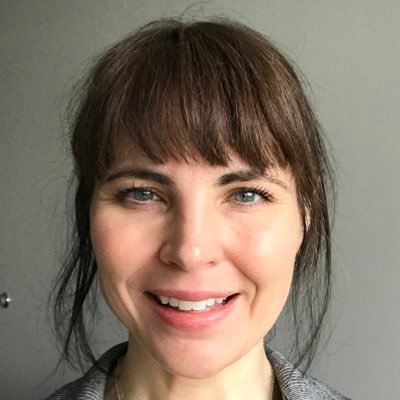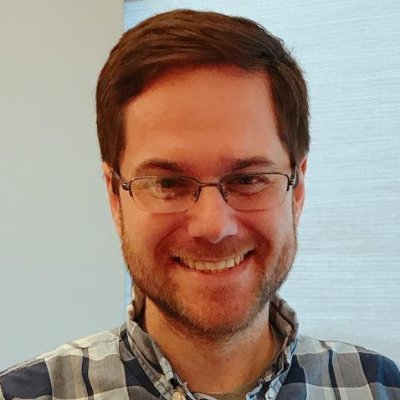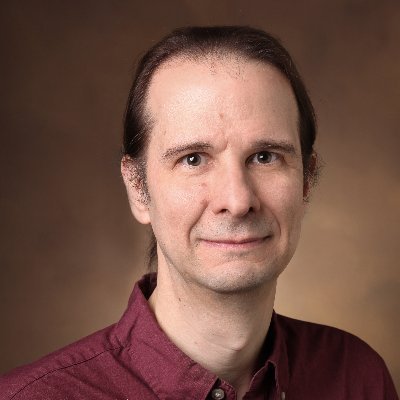
Lisa Bastarache
@lisa_bastarache
Followers
550
Following
1K
Media
18
Statuses
242
I have come here to chew bubblegum and reduce diagnostic delay in Mendelian disease. And I’m all outta bubblegum.
Nashville, TN
Joined August 2015
When running a #PheWAS, how to avoid confounding due to LD of index variant with other variants❓ 👉CoPheScan combines PheWAS with colocalization addressing this issue 👉in simulations, it's more accurate than methods not accounting for LD confounding https://t.co/qadxllUzQJ
1
22
55
Excited to share our latest work validating an automated patch clamp assay for SCN5A, now out in @Circ_Gen! https://t.co/TBvTzS9Yj7 (1/4)
1
15
36
Excited to share our manuscript in @NatureComms looking at the clinical consequences of a polygenic predisposition to benign lower white blood cell (WBC) counts. @VUMCgenetics @VUMC_Medicine @vumcdbmi @VUMCHemOnc
https://t.co/jKODtgxjay
nature.com
Nature Communications - Here, the authors find that a benign polygenic predisposition to lower white blood cell counts is associated with multiple clinical endpoints, suggesting that predisposed...
2
14
51
Congratulations to Julie for her new role! This is a win for science at Vanderbilt, IMHO.
news.vumc.org
Julie Bastarache, MD, has been appointed Assistant Vice President for Clinical & Translational Scientist Development at Vanderbilt University Medical Center.
9
8
66
6) Diagnostic convergence may be totally obvious to clinicians, but overlooked by data scientists as they develop algorithms to detect undiagnosed patients. We hope our model will help researchers avoid leakage in training/testing their models!
0
1
5
5) Diagnostic convergence matters a lot for algorithms designed to detect undiagnosed disease. Censoring prior to clinical suspicion is really important to avoid leakage. Look how different PheRS performs across the trajectory!
1
1
4
4) A diagnosis is not just a description; it is a lens. Patients look difference once the process begins. In >200 patients with 9 different genetic diseases, we found that most characteristic phenotypes were ascertained after a clinician became suspicious of a genetic disease.
1
1
2
3) In EHR data, phenotype ascertainment is largely driven by the exams & studies prompted by clinical suspicion. We call this process diagnostic convergence, as EHR phenotypes come to resemble the classical picture of the disease thru the diagnostic process.
1
1
4
2) A diagnosis is not a single moment, but a process that unfolds over time. We created a conceptual model of the diagnostic trajectory for EHR data. The process begins with clinical suspicion of a genetic disease and ends with a confirmed diagnosis.
1
1
3
1) Are you developing algorithms to detect patients with undiagnosed genetic disease? If so, you may find our new paper helpful! @rozatinker @joshpetersonMD
pubmed.ncbi.nlm.nih.gov
Using a novel conceptual model to study the diagnostic trajectory of genetic disease in the EHR, we demonstrated that phenotype ascertainment is, in large part, driven by the clinical examinations...
1
12
45
This package was written by the wonderful @layla_aref and the inimitable @jakejhughey. You can read more about it here: https://t.co/vNGxNuh4Ul 4/4
biorxiv.org
Electronic health record (EHR) data linked to DNA biobanks are a valuable resource for understanding the phenotypic effects of human genetic variation. We previously developed the phenotype risk...
0
1
8
For fans of replication (i.e. everyone), the package includes positive controls that can help you learn about the method and about your data. 3/4
1
0
4
You can use the package to generate PheRS for over 4000 Mendelian diseases. Go ahead and try it! All you need are ICD billing codes! If you're lucky enough to have genetic data as well, the package also supports genetic association tests. 2/4
1
0
3
For phenotyping enthusiasts out there, I'm happy to announce a new R package for phenotype risk scores. https://t.co/NQbcz0g2mm 1/4
cran.r-project.org
Use phenotype risk scores based on linked clinical and genetic data to study Mendelian disease and rare genetic variants. See Bastarache et al. 2018 .
2
32
109
Look! It’s a cartoon of my sister doing her science!🔥 Go Jules!
Dr @JulesBass6, a physician-scientist at @VUMChealth, is using her unique role as a hospital #doctor and lab #scientist to understand and treat acute respiratory distress syndrome. She has not only found an underlying cause, but also a possible cure. https://t.co/oli4RQ6W3x
0
0
5
A great example of how useful it is to look at things from a different perspective. Most of these genes were discovered & described in family based studies. Viewing them from the population level reveals new patterns. Fantastic job to the team & most especially @zeng_chenjie. 2/2
0
0
10
Do you think we know all the phenotypic consequences of hereditary cancer genes? No way! This study uses EHR data to search for unrecognized consequences of known pathogenic variants in genes like ATM, CHEK2 and APC. 1/2
Happy and honored to be in the best team on #PheWAS ever. This would not be possible without @lisa_bastarache, Georgia Wiesner, Justin, @sarahtbland, Eric Venner, Richard Gibbs, Ali Gharavi, @JoshPetersonMD, Dan Roden, and many others @eMERGENetwork_
1
3
25











